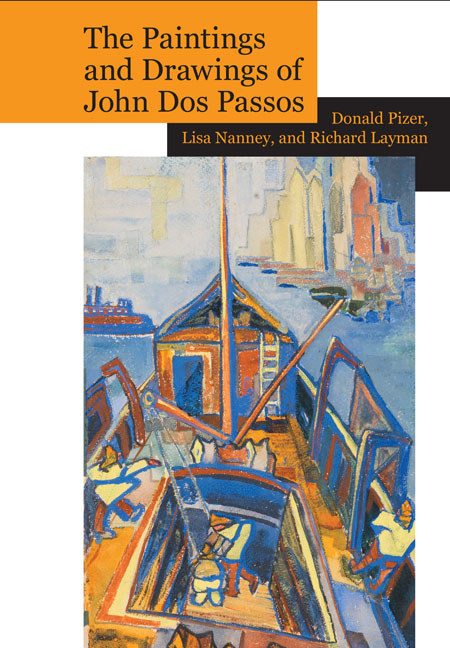Preface
Summary
John Dos Passos (1896–1970) is known principally as a major twentieth-century American writer. His long and prolific career began with One Man's Initiation: 1917 (1920), a novel based on his World War I experience, reached an early peak with two of the most significant and widely discussed novels of American literary modernism—Manhattan Transfer (1925) and the U.S.A. trilogy (1930–36)—and continued unabated until his death. Less known are the many watercolors that Dos Passos painted throughout his career. His life as an artist has received little attention because Dos Passos himself called little attention to it. During his early twenties he was torn between a career as a writer or painter, but when he soon afterwards determined to devote himself principally to writing, painting became an avocation rather than a profession. He continued to paint for the remainder of his career (his daughter Lucy recalls his lifelong habit of writing in the morning and painting in the afternoon), but his principal creative effort was directed toward achieving success as a purveyor of “used paper,” as he and Hemingway jokingly referred to their unsold manuscripts.
Why, then, is there any need for an interest in Dos Passos's work as a painter? The answer to this question lies in the quality and relevance of his paintings. Two major retrospective shows since his death—at Richmond in 1980 and Columbia, SC, in 1999—revealed for the first time the strength and richness of his paintings when viewed as a collected body of work. The shows suggested that his painting deserves greater study both as a display of a hitherto unknown aspect of Dos Passos's artistic sensibility and as a revelation of the interplay between fictional and graphic modernism in a major twentieth-century American writer.
Dos Passos occasionally exhibited his work between the early 1920s and the late 1930s, but few if any of these paintings sold and made their way into permanent collections. At his death, therefore, almost all his art work (aside from paintings presented to friends) became the property of his estate—that is, initially his widow, Elizabeth Holdridge Dos Passos, and then their daughter, Lucy Dos Passos Coggin—where they still reside.
- Type
- Chapter
- Information
- Publisher: Liverpool University PressPrint publication year: 2016



